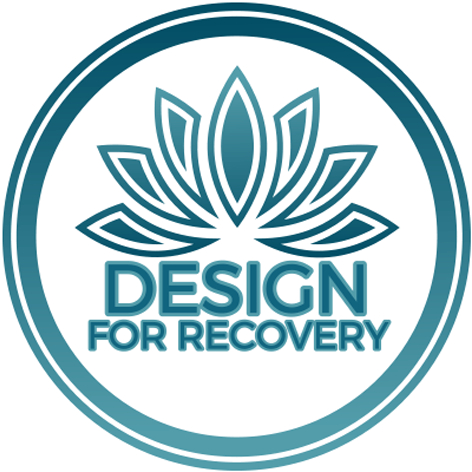- Who We Are
- Locations
- Testimonials
- Programs
- AddictionMain MenuMain Menu
- Recovery
- Sober Living
- Alcoholic Anonymous
- Contact
Sober-Living Homes for Men
Share this:
Apply for our Sober Living
Sober Living » Sober Living Homes for Men
What is Men’s Sober Living?
At structured sober living homes, young men can progress through withdrawal, work on the underlying issues behind their addictions, develop new behaviors and values, and start to rebuild their lives.
Many residents enroll in school or get jobs, often aided by the support and resources of the sober living home staff. By the time young men graduate from a men’s sober living houses program, they have a strong social support system and have begun to build healthy and prosperous lives in sobriety.
Studies on sober living homes have demonstrated that residents have a lower likelihood of relapsing long after graduating and better legal, financial, and mental health outcomes.
After completing the program, former residents continue to achieve things they may not have thought possible. After finishing the period of recovery that a sober living home requires, former residents have a strong foundation of sober tools that they take with them into the future.
They will understand that addiction can never be cured but can be treated and put into remission. Many former residents remain involved in their sober living homes, either as a mentor or through graduate support groups.
By continually working on their recovery program and expanding their sober social support system through 12-step meetings, sober living graduates can ensure that they remain sober and substance-free for the rest of their lives.
Sober living for men is a recovery program that individuals stay in for several months to a year and are a valuable tool for transitioning to the real world. The recovery services available in a sober living home are not limited to addiction recovery. Sober houses place great emphasis on skills and values that are necessary to live quality lives after addiction. To that end, they work with residents to build skills, emphasize values, and set goals.

Welcome to Design for Recovery

Check out our welcome video to learn more about life at Design for Recovery, a sober living community based in beautiful Los Angeles, California. Begin your new sober life with us and learn the skills you need to thrive.
Benefits of Sober Living for Men
Sober living for men can make the process of early recovery from a substance use disorder feel safer, more enjoyable, and ultimately more effective.
Living in a recovery community of other young men in sober living allows residents to open up freely about sensitive topics. Men often have issues related to their addiction that they find uncomfortable discussing around women. Addiction affects every aspect of a person’s life, including sexuality, mental and physical health, and family life. Men often have addiction stories that include violence and crime.
While some people eventually reach a point where they can open up about their pasts and current struggles with anyone, the early days of sobriety are a vulnerable period, and it is important to feel safe and unjudged.
The early days of sobriety are a difficult transition period during which many individuals struggle with emotional and behavioral issues. Men, in particular, are likely to be prone to violent outbursts, compulsive behavior, and competition. Residing at a sober living for men is more likely to mitigate these behaviors, but it is also safer for women and other populations who have separate issues to face.
Visit and get the best house for men’s structured sober living near me in California with us.
Gender-Specific Homes
For heterosexual men, being in a gender-specific household is also beneficial because it eliminates the needless distractions of sex and dating, which can derail an individual’s early recovery during the first few days of sobriety.
For homosexual men, living in a same-gender household may not completely eliminate distractions, but it does provide an opportunity to reside within a community that is more understanding of their experiences.
What are You Waiting for?
Join us at Design for Recovery sober living homes in Los Angeles, California.
Sober Living for Young Adults with Substance Abuse Disorder
Men have several characteristics that increase their risk of developing an addiction and worsen the associated dangers. They are statistically far more likely to abuse drugs and alcohol than women.
Men consume opioids, stimulants, and alcohol in far more quantities than women. Young adults are also prone to taking risks and acting impulsively, which can quickly lead to substance abuse disorder and further harm those struggling with it.
Men often have reservations about seeking treatment even after years of substance abuse. Due to the way men metabolize alcohol and drugs, they tend to experience the damaging mental and physical consequences of substance abuse later than women do. While this may appear to be a positive consequence, the result is that men often spend more years in active addiction.
Men are also more reluctant overall to seek help for their addictions because addiction is more stigmatized for men.
For many, cultural norms dictate that it is “unmanly” to seek help or to lose control. Burdened by these cultural expectations, men spend years of their lives fruitlessly trying to exercise discipline and willpower to master their addictions. Unfortunately, without seeking the help of a strong evidence-based treatment program, most have little success.
At sober living for men, new residents can join a community of other men who have decided to change their way of life. Meeting other young men who have sought help to deal with their challenges can go a great way toward destigmatizing addiction for men.

People Who Have Made Progress
People who have made progress in their sobriety provide a great example of what can be achieved by seeking help. Being around others struggling with substance abuse can help men realize they are not alone and that their addiction is not due to weakness or lack of masculinity.
Choosing a Sober Living Home for Men
Before enrolling in any sober living home, ensuring that the facility meets your unique needs and is run effectively is a good idea. You are free to explain to the managers your personal history and ask questions about the resources they offer and how the program is structured.
If you are unsure of the quality of a sober living home, you can consult The Sober Living Network. This organization offers a free listing of sober living homes and ensures that each recovery home in its directory meets quality standards. Members of their Sober Living Coalition are guaranteed to be well-managed, safe, and ethical.
When researching and selecting a sober house, it is important to look out for several qualities. These include:

Regular Drug Testing
This ensures that you’ll live in a safe environment with other sober residents, as well as helps you stay accountable to yourself.
Location and Transportation
Choosing a sober living home in a practical location for your unique needs is ideal. Another good question is if they provide a means for residents to attend 12-step meetings in the area.
The Number of Residents
You want to ensure that your sober house has the space and resources to accommodate your needs.
Affordability
Sober-living homes for men cost money. Many can help you develop a plan to finance your residency.
Sufficient Length of Stay
It’s crucial to ensure that men’s structured sober living homes allow residents to stay for the duration required so that they have enough time to recover.
Experienced Staff
The staff and management at a sober living home should have experience working with recovery. An ideal men’s sober living home has staff available 24/7.
Structure
Although most sober living homes don’t offer the same structured scheduling as inpatient treatment centers, choosing a sober living home that provides resources beyond a place to sleep is important.
Choosing on a Sober Living Home for Men
When researching and selecting a sober living home, it is important to look out for a number of qualities. These include:
Regular Drug Testing
This ensures that you’ll be living in a safe environment with other sober residents, as well as helping you stay accountable to yourself.
Number of Residents
You want to make sure that your sober living home has the space and resources to accommodate your needs.
Sufficient Length of Stay
It is important to make sure the sober living for men allows residents to stay for the length you need to guarantee sufficient time for recovery.
Structure
While most sober living homes do not provide the same intensity of scheduling as inpatient treatment centers, it is important to choose a sober living home that offers resources beyond a bed.
Location and Transportation
It is good to choose a sober living home that is in a practical location for your unique needs. Another good question to ask is if they provide a means for residents to attend 12-step meetings in the area.
Affordability
Sober living homes for men cost money. Many can help you develop a plan to finance your residency.
Experienced Staff
Staff members and management at a home should have experience working in recovery. A good sober living for men has staff available 24 hours a day.
What to Expect From a Men’s Sober Living Home
A men’s sober living home is an ideal place to reside while overcoming drug abuse or alcohol addiction and preventing relapse. Men can live in secure, structured environments while maintaining their recovery.
Men’s s sober living facilities typically have strict guidelines that residents must adhere to.: A curfew, no guests, no drugs or alcohol use, and attendance at weekly meetings and 12-step programs are a few examples of rules and regulations. Also, sober living homes often have a house manager who is in charge of overseeing the house daily.
Residents in sober living facilities usually encounter similar experiences. This may be a huge source of comfort and encouragement for men striving to stay sober.
Men’s Sober Living Community in Los Angeles
Los Angeles is home to a thriving sober community. Not only does it contain countless treatment centers and sober living homes for men, but people outside formal treatment facilities have access to support groups and 12-step meetings 24 hours a day.
Alcoholics Anonymous and Narcotics Anonymous meetings are available at all hours throughout the city, so anyone in need of support can easily find a sober companion nearby. Regularly attending these meetings allows people to develop strong social support systems and new behavioral strategies that facilitate long-term sobriety.
Many support groups and 12-step programs offer meetings specifically for men and young people. These meetings allow them to open up about issues they might normally be reluctant to discuss in a coed setting or mixed company. Men’s meetings, including gay men’s meetings, are great opportunities to develop social support systems. 12-step programs also often encourage newly sober individuals to get “sponsors” of the same gender.
Sponsors are people who have experience in the 12-step program and help guide newly sober people through the process of getting sober and rebuilding a life. The relationship requires a great deal of trust and honesty, and many find that easier with a member of the same gender.
Los Angeles is an enormous city with the largest population in California. Unfortunately, the area also suffers from a major addiction problem due to rampant crime and poverty. The upside of addiction’s prevalence in LA is that many people have recovered from addiction in the region as well. The city’s open-minded and free-thinking culture makes it a welcome place for people with a background of addiction.
Many non-addicts in Los Angeles are sensitive to issues of sobriety and addiction, and discrimination is less common in Los Angeles than elsewhere. In fact, in health-conscious Los Angeles, sobriety might even be said to have a certain social cachet.
Sober Fun for Recovering Men in Los Angeles
Los Angeles is an international destination widely perceived as an exotic, luxurious place — a paradise for the rich and famous. Residents generally have a more nuanced assessment of the area, but few Angelenos would deny that the city has something for everyone. While Los Angeles has its share of bars and nightclubs, you do not need to be drunk or high to enjoy the city’s offerings.
While it might take some getting used to the idea of “sober fun,” especially in the early days of sobriety, many people discover joy in activities they could never imagine doing without the crutch of drugs and alcohol. Having a strong group of sober friends is an important resource for having sober fun. Many individuals also unlock the city by connecting with sober companions in men’s sober homes near them and in 12-step meetings.
While the offerings of Los Angeles are limitless, here are just a few of the fun sober activities to do in Los Angeles:

The Griffith Observatory
The Los Angeles County Museum of Art (LACMA)
Grand Central Market
Venice Beach
The Santa Monica Pier
The Hollywood Bowl
Hiking
The Griffith Observatory
For newly sober individuals, one great way of getting out of your head is looking up — at the stars. The Griffith Observatory offers people a chance to look through high-powered telescopes. Located at the high altitude of Griffith Park, you’ll also have a chance to look at the city from a bird’s eye perspective.
The Los Angeles County Museum of Art (LACMA)
LACMA’s enormous permanent art collection and revolving exhibits make it an essential destination for the city’s art lovers. There are many other museums throughout Los Angeles, including The Getty and the Norton-Simon Museum.
Grand Central Market
Smack dab in the center of Downtown Los Angeles, Grand Central Market is a food hall with plenty of history. Offering fresh produce and meals at chic mini restaurants, the market draws enormous crowds from all over the area.
Venice Beach
Even if you don’t want to get into the water, Venice Beach is an incredibly diverse place to go for a stroll. Whether you’re interested in shopping or just people-watching, there’s something for everyone.
The Santa Monica Pier
The Santa Monica Pier features amusement park rides, arcades, restaurants, and novelty stores. Located above the ocean, the pier is both scenic and exciting.
The Hollywood Bowl
The Hollywood Bowl hosts concerts almost every day of the month, featuring major pop stars and experimental musicians alike. Countless smaller venues are scattered throughout the city, from the Echoplex to the Troubadour.
Hiking
Los Angeles is nestled against mountains, so it’s no surprise that there are countless trails to hike on. Your options are limitless, from Griffith Park trails to Runyon Canyon in Hollywood.
Why Choose to Live in a Men’s Sober Living Home?
Having a place to live in an environment free from drugs and alcohol is the main reason for selecting a sober living facility. These houses support people as they transition from their former way of life and educate them on a new way of living with sobriety at its core.
Peer support is crucial to maintaining sober. Residents in sober living homes can live with other people who share the same experience dealing with addiction and the same goal of sustaining sobriety.
Sober living house rules, such as following a curfew and helping with household chores, help teach accountability and responsibility to residents who have never experienced living in a structured setting. These rules serve as a reminder that everyone must take responsibility for their actions and behavior to be productive members of society.
Sober Living Houses vs. Rehab Centers vs. Halfway Houses
Residents of sober living houses usually come from inpatient drug and alcohol rehabilitation centers. Generally speaking, a sober living home is ideal when a person’s home setting is not conducive to ongoing recovery.
Residents of sober living facilities frequently participate voluntarily while continuing their outpatient treatment. Sober living facilities are either privately owned or a component of a continuum of care from an addiction provider’s treatment. A sober living home enables an individual to practice skills learned in therapy in a less triggering setting. Compared to halfway houses, sober living homes provide structure, more privacy, and expert care.
On the other hand, rehab is the process of treating drug or alcohol abuse with both medical treatment and psychological counseling. Residential or inpatient rehab is an addiction therapy that offers individuals professional care around the clock. Residential treatment is frequently suggested for cases of severe or long-term addiction, as well as for people suffering from co-occurring disorders, due to the comprehensive nature of the care given. In rehab, daily life is very structured. The days are jam-packed with activities and treatments to prevent boredom and downtime, where individuals could be tempted to relapse into drug or alcohol use.
Meanwhile, a halfway house is a type of community home often developed for individuals mandated to remain in a transitional facility for some time. These people often return to society after serving time for a drug-related or alcohol-related offense. Halfway houses allow those leaving prisons to adapt to their new lives more easily. These houses offer a secure, sober living environment and access to a range of support services, such as financial planning, mental health care, job training, educational assistance, and more. Compared to a sober living home, a halfway house for men sometimes offers less structure and privacy.

Rules and Regulations of Men's Sober Living Homes
To stay in a men’s sober living home, you must agree to follow the regulations of the sober living facility. Although each property has its particular requirements, the following general guidelines apply to all:
- No alcohol or drugs
- Adhering to established curfews
- Involvement in household chores
- Compliance with random drug testing
- Attending house meetings
- Attending 12-step programs for recovery
- Taking part in work or school
You must be ready to commit to the house rules before staying in a sober living home. These guidelines for sober living are established to set boundaries, foster responsibility, and keep all residents in a safe environment.
Sober Living for Men: An Essential Step in Long Term Recovery
Sober living for men is often recommended to young men who have graduated from a formal addiction treatment program, such as an inpatient or medical detox center. They are widely considered an essential part of an aftercare treatment plan for long-term addiction recovery after a person leaves the structured world of a treatment center. Having a long-term plan in place is absolutely essential for one’s recovery journey.
Research has repeatedly shown that individuals who remain in recovery programs longer have higher chances of relapse prevention. Men’s sober living homes offer the ideal recovery program for young men who want to ensure that they continue progressing in their paths to sobriety.
Recovery homes, as they are sometimes known, are also often used as the first line of defense against addiction. At a high-quality sober living home, an individual can often bypass the steps of attending a medical detox center, inpatient program, or partial hospitalization program. However, this depends on the unique circumstances of the individual and the nature of their addiction. Structured sober living houses, in particular, are excellent resources for all stages of recovery since their involvement in residents’ recovery extends beyond merely offering a sober place to live.
Finding a Sober Living for Men Near Me
Choosing a sober living home for men that is right for you is an important decision requiring research.
If you are ready to make a change and take the next step toward a sober life, you can take advantage of a variety of resources to find high-quality sober living houses near you:
These resources include:
- Speak to caseworkers at your treatment center. They can often recommend sober living homes they’ve seen people use successfully.
- Google “men’s sober living houses near me” or “male halfway house near me”. Google will factor in your location and show you sober living homes listed by the approximate distance from your device’s zip code.
- Contact a medical professional or social worker who is familiar with your history.
- Get recommendations from members of your support group or 12-step meeting.
- Search the listings on the National Alliance on Recovery Residences (NARR) website.
- Intervention America also lists sober living homes in a large directory. You can even search for specific subtypes, including men’s sober living houses for men.
Get the best men’s sober living with Design for Recovery. Check our locations and choose one which suits you.

Rebuild Your Life at Design for Recovery
Design for Recovery Sober Living is a sober living home for men in West Los Angeles. Not only is it centrally located in a city known for its sober resources and community, but the home also offers a highly structured program that can help even the most low-bottom cases of addiction. Young men from all over the country flock to Design for Recovery Sober Living because the home has a history of helping people who have not succeeded in other recovery programs.
Sober Living Home for Men in Los Angeles, California
If you are ready to make a change and start rebuilding your life, check out some testimonials from other young men who have been through our program and call us at (424)327-4614 today.
Frequently Asked Questions on Sober Living Homes for Men
Is It Best for a Man to Seek Men’s Sober Living?
A men’s sober living home is an excellent approach to assist men in staying on track while recovering from addiction. Men’s sober living homes provide many benefits. One of the most significant advantages is that it offers a structured recovery process, safety, and encouragement to men seeking to maintain sobriety. Residents are strengthened by peer support, and they feel more accountable and responsible.
What’s It Like to Be in a Men’s Sober Living?
At men’s sober living homes, men may sustain their recovery while living in a safe, structured environment. These homes may have strict guidelines that individuals must follow. Some rules and restrictions include a curfew, having no visitors, abstaining from illicit substances and alcohol, and attending weekly meetings and 12-step programs. Residents can also make friends in sobriety and develop a strong sense of community and camaraderie within our recovery community.
What Does Sober Mean in Mental Health?
According to the American Psychological Association, being sober means abstaining from drinking alcohol or taking other substances.
What are the Benefits of Entering a Santa Monica Sober Living?
Sober living homes in Santa Monica can improve the chances of remaining abstinent following inpatient treatment. They provide social support for individuals with similar goals. They are safe and structured environments that nurture and prepare the individual for reentry into the real world. Some of the most important benefits that residents receive in sober living homes include:
- Constant guidance and support
- A strong sober social support system
- Improved life skills
- A smoother transition to independent living
- Lowered risk of relapse
- A safe, trigger-free space to pursue recovery
- Help to find employment
- Improved relationships with friends and family
Who Should Consider Joining a Sober Living House?
Anyone who wants to abstain from alcohol or drugs should consider joining a male-sober living house. This kind of facility can be a perfect choice if you have previously undergone rehabilitation but are not ready to manage your way of living independently. Also, those who cannot find safety and structure in their family members or homes are advised to consider joining a sober living house, which provides a supportive environment essential to sobriety.
How Long Should Residents Stay in a Sober Living Home?
It is generally recommended to stay in a sober house for at least 90 days. Yet, there is no set period because rehabilitation is largely customized and tailored to the requirements and recovery goals of the individual. One person could be ready to reintegrate into society after three months, whereas another would benefit from a longer stay. According to a study published in the Journal of Psychoactive Drugs, the average length of stay in sober living homes ranged from 166 to 254 days.
How Much Does Sober Living Cost?
The cost of staying in a sober living house varies based on its location and features. Sober living homes generally cost less than traditional treatment facilities or inpatient programs. This is because sober living homes do not provide medical treatment or monitoring around the clock. Residents at sober living facilities frequently have to pay rent, which normally covers the utilities, cost of food, and other expenses. They may also be expected to pay to a household fund in some sober living facilities. Some sober living facilities do not take insurance, so residents could have to spend out of pocket for their stay.
See What People Say About Our Los Angeles Sober Living Home
Excellent choice for anyone in need of support through challenging times in their lives. My brother entered the program almost 4 years ago and has never looked back. Now actually employed within the company and able to help others as they connect with him well knowing he has been in their shoes at one time! Been the best choice of his life and I couldn’t be prouder of him or the staff who helped him get there!
Damon McCrystal⭐️⭐️⭐️⭐️⭐️
If I have ever felt truly apart of something positive, it would be Design For Recovery. I’ve spent alot of time in and out through different programs, some good, some bad, but nothing even comes close to the experience that I’ve had, and am still having at this place. Truly blessed and grateful that something has actually given me my life back. Professional staff, clean homes, and people that actually care about seeing you succeed. Thank you DFR!
Taylor Aull⭐️⭐️⭐️⭐️⭐️
My son has been living in a sober living home which has taught him how to control his addiction and become a better person. This house is very well maintained and beautiful. Because they have gone through the program themselves and are familiar with it, house managers are able to guide you during the whole process. Attending meetings on a weekly basis and keeping a clean environment contributed to his growth.
Alice Black⭐️⭐️⭐️⭐️⭐️
In my opinion, this is one of the TOP resources that contributed to saving my son’s life. Staff and managers go above and beyond to make sure your transition after detox or rehab is as smooth as possible. If you’re truly committed to your recovery, then this is the place for you. The house is comfortable and in an excellent location. Choosing a sober living home in Los Angeles for my son was the best decision I could have made.
Camille Jones⭐️⭐️⭐️⭐️⭐️
My son Zachary was at his breaking point his mother and I had sent him to multiple rehabilitation centers and other sober livings. Nothing seemed to work. Then Design For Recovery gave Zach the gift of the opportunity to recover from a seemingly hopeless state of mind and body. The accountability within the house is amazing. The loving and understanding kindness of the staff gave him a good example of how to conduct himself as a sober person.
Juana Black⭐️⭐️⭐️⭐️⭐️
Zach was never told what to do just given the opportunity to do it with kind understanding, guidance and direction. It was very clear to us that he was in a great place that genuinely cared about sobriety. The opportunity that Zach was given of a safe, sound and sane place to be at while he recovered from this horrific addiction has allowed him to re-establish my relationships with us, his family, Zach’s life was literally saved in this place I will forever be grateful for Design.
Juana Black⭐️⭐️⭐️⭐️⭐️
Design For Recovery’s sober living environment is definitely the best I’ve ever sent my son to for sure. Micah has been to other places that were not even close in comparison. If you follow their rules and actually open your mind up to new ways of living you won’t regret it. I recommend their sober living for those who really need a structured environment to grow in, the way they have it set up will definitely help change the way you view or do things for the better. It has truly set my son on the right path. Thank you Design!
Benjamin E. Palazzolo⭐️⭐️⭐️⭐️⭐️
This place saved my life when I needed it most!
zackass⭐️⭐️⭐️⭐️⭐️
Previous
Next
Play Video
Play Video
Play Video
Stay Connected to Our Thriving Sober Community in Los Angeles, CA
Join our newsletter to be part of a community of people with shared experiences. This is a great asset to those struggling with their own personal battles. Our quarterly newsletter reminds you that others have gone down this path and can provide valuable support. No matter where on your journey – considering sobriety, living sober for years or months already – our newsletter is here as a guide with helpful resources, events, and more.

Locations
Sober Living Los Angeles
- 6467 West 83rd Street, Los Angeles, CA 90045
- Call us today (310) 554-6884
- Open 24 Hours
- Get driving directions
West Los Angeles Sober Living
- 11960 Modjeska Place, Los Angeles, CA 90066
- Call us today (424) 327-4614
- Open 24 Hours
- Get driving directions
